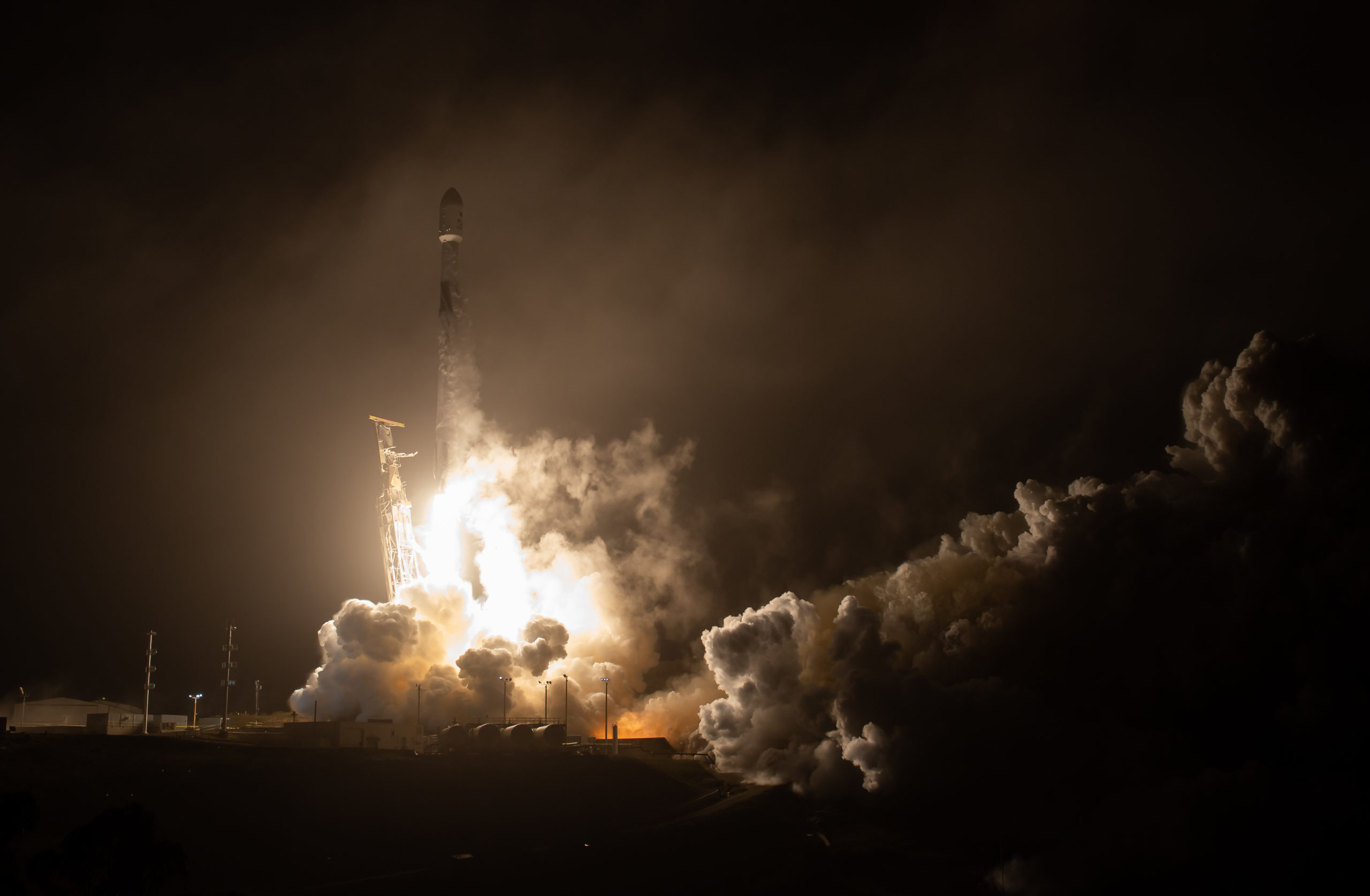
After a delay-plagued first month of the year, SpaceX is only hours away from its seventh Falcon 9 launch in January, as a record-setting booster prepares to fly tonight from California. Seasoned B1063—a grizzled West Coast veteran, flying a record-breaking 15th time from Vandenberg Space Force Base and the 16th mission of its career—is targeting a raft of T-0 points extending from 4:35 p.m. PST through 8:35 p.m. PST, with backup opportunities available from 4:14 p.m. PST Wednesday.
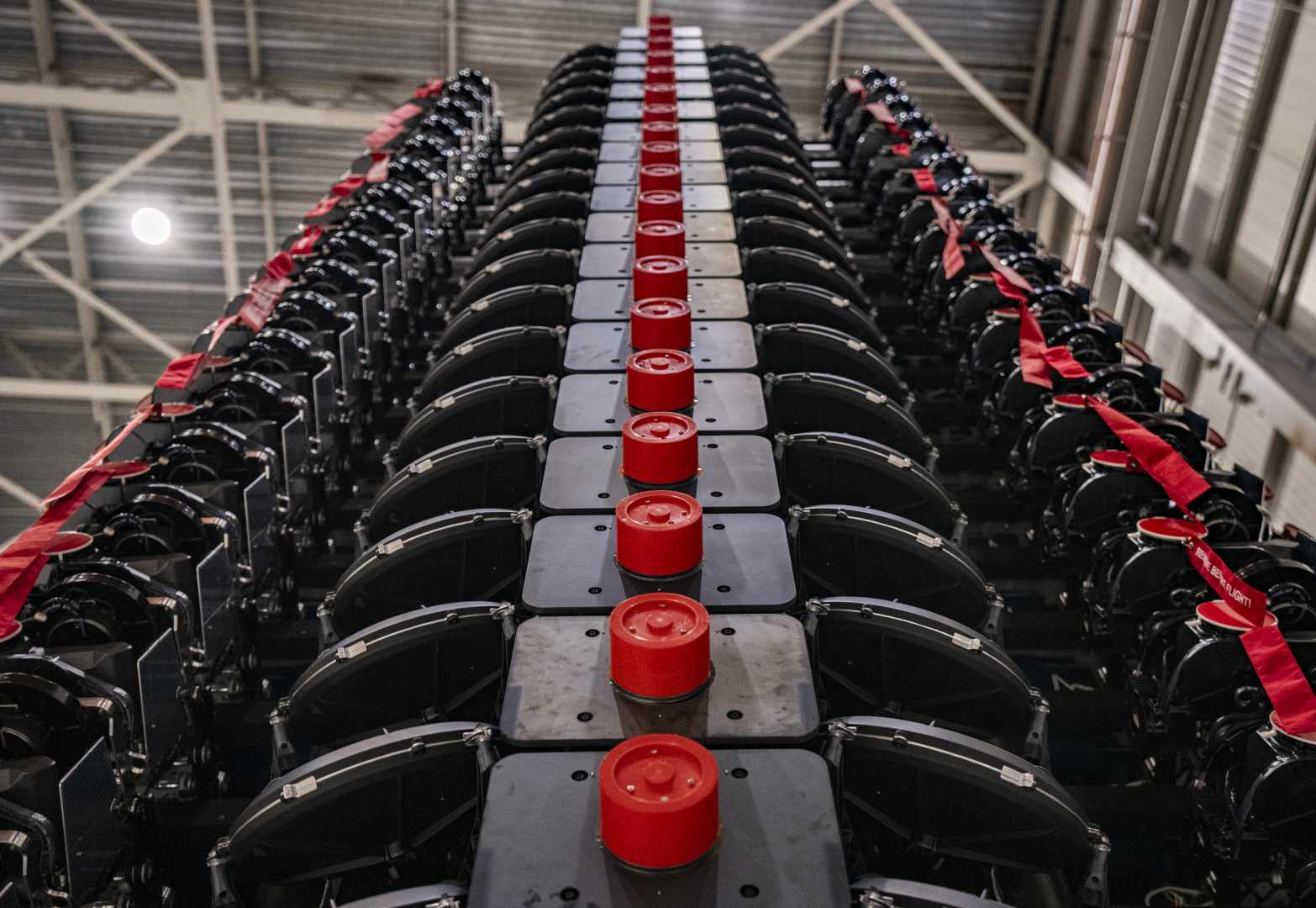
For tonight’s flight, B1061 is laden with 22 Starlink internet communications satellites, totaling 38,800 pounds (17,600 kilograms), destined for insertion into low-Earth orbit. It will bring the total number of these flat-packed satellites launched so far in 2024 to more than a hundred aboard five Falcon 9 missions.
Following liftoff from Vandenberg’s Space Launch Complex (SLC)-4E, B1063’s nine Merlin 1D+ engines will power the 230-foot-tall (70-meter) stack uphill for the opening 2.5 minutes of ascent, before Main Engine Cutoff (MECO), stage separation and a descent and touchdown on the deck of the West Coast-based Autonomous Spaceport Drone Ship (ASDS), “Of Course I Still Love You”, situated offshore in the Pacific Ocean. The single Merlin 1D+ Vacuum engine of the Falcon 9’s second stage will then ignite for a standard six-minute “burn” to deliver the 22 Starlinks into orbit.
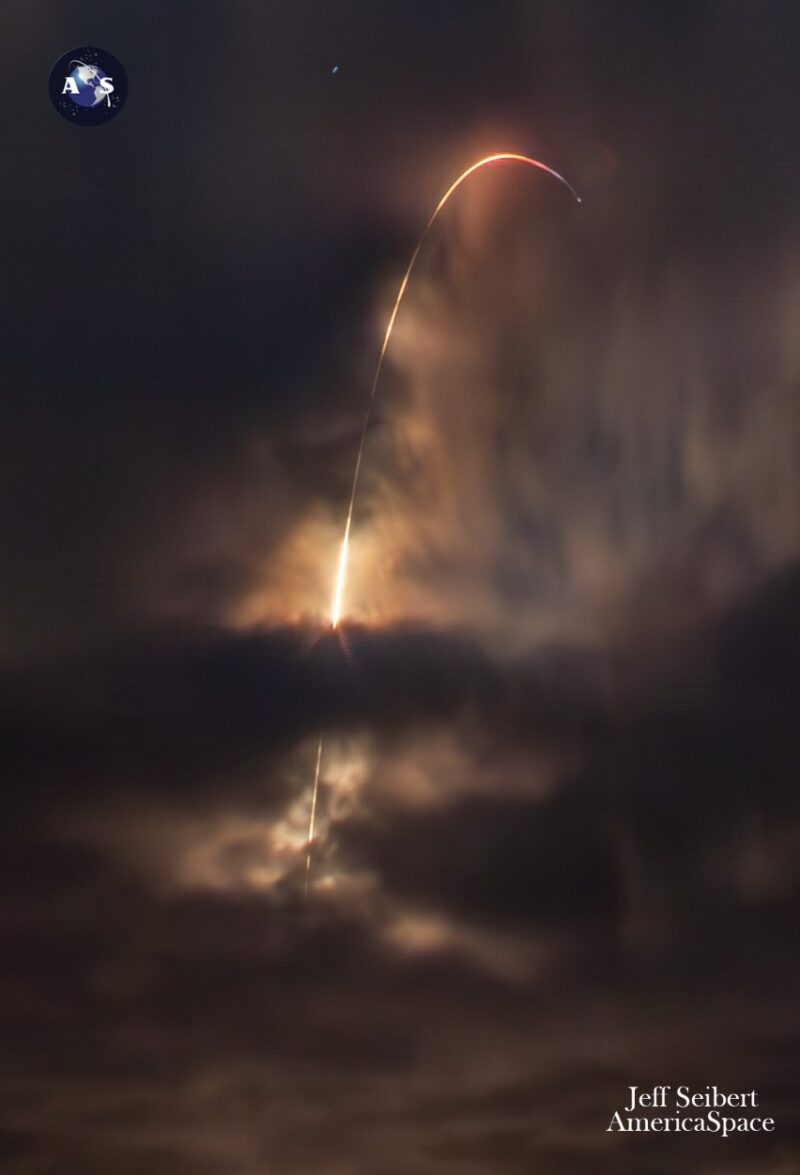
A year ago, seven launches across the span of an entire calendar month was a newly achieved personal best for SpaceX, with the Hawthorne, Calif.-headquartered organization scoring its first eight-launch month last March and its first month to feature nine launches last August. Each consecutive month since then has seen nine launches, but despite 2023’s record-breaking cadence of 96 Falcon 9 and Falcon Heavy missions SpaceX is reportedly aiming for around 144 launches this year, an average of 12 per month.
January began with impressive pace, as a pair of Falcon 9s roared aloft from opposing seaboards of the United States—a Starlink launch from Vandenberg and Sweden’s Ovzon-3 broadband communications satellite from Cape Canaveral Space Force Station, Fla.—conducted only 19 hours and 20 minutes apart on the year’s third day. But the pace slowed a tad in January’s second week, when the second Vandenberg mission of the year suffered several days of delay due to poor weather, and last Thursday’s launch of Dragon Freedom and her Ax-3 crew of Commander Mike Lopez-Alegria, Pilot Walter Villadei and Mission Specialists Alper Gezeravcı (the first national spacefarer of Türkiye) and Marcus Wandt itself succumbed to a daylong delay of its own.
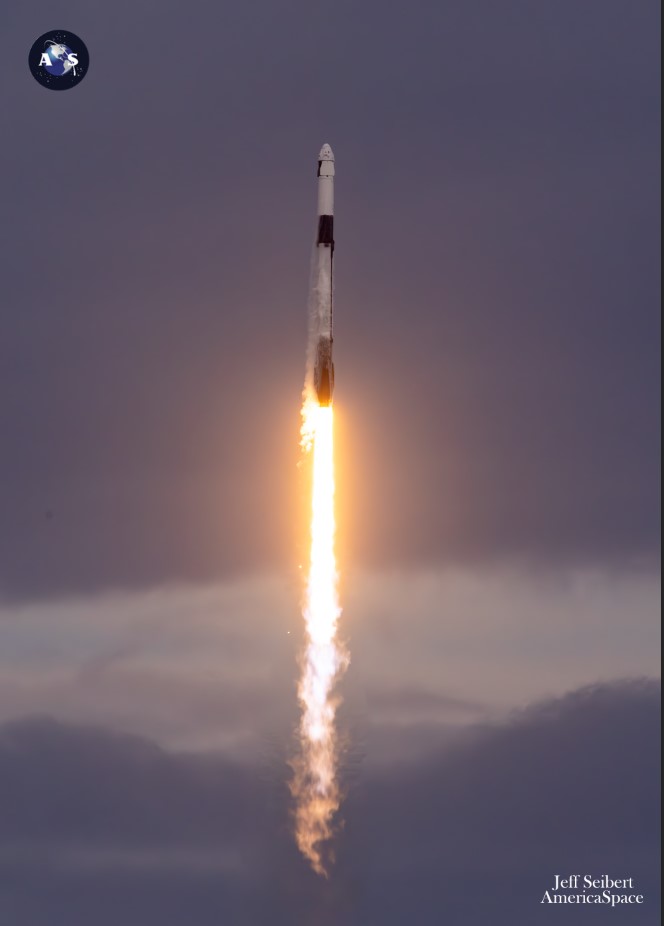
Seven launches inside January’s first three weeks approximates a mission every 3.2 days, somewhat greater than the 3.8 days averaged last year. But in order to attain 12 flights per month—or 144 across the span of 2024—requires a rate of a mission each 2.5 days or so and tonight’s planned Vandenberg launch has seen Mother Nature remind SpaceX for several consecutive days that it is she who remains in charge.
Teams initially aimed for last Thursday evening, during a two-hour “window” opening at 8:04 p.m. PST and closing at 10:05 p.m. PST, despite a 20-percent possibility of rain showers. In readiness for launch, loading of the Falcon 9 with liquid oxygen and a highly refined form of rocket-grade (known as “RP-1”) got underway on time at T-35 minutes, but despite earlier tweeting that “all systems and weather” were go, SpaceX ultimately elected to stand down and enter a 24-hour recycle.
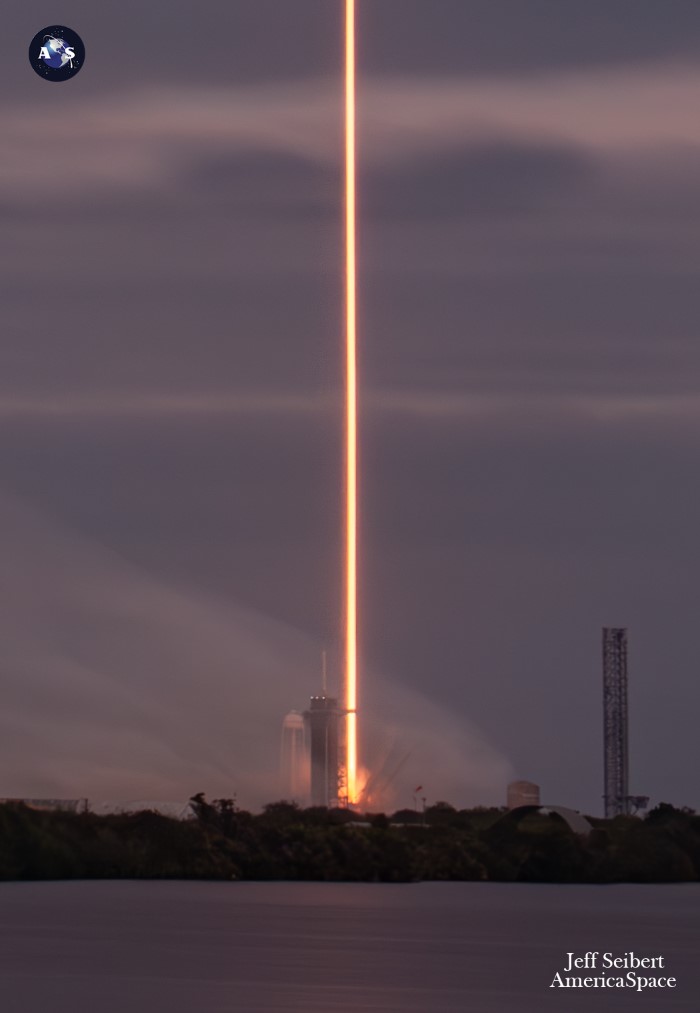
But attempts last weekend proved no more charmed, as B1063 was twice stood down due to an inclement weather outlook and launch was realigned for the late afternoon into early evening hours of Tuesday. If the mission flies tonight, there remains the possibility that SpaceX will match its current trend by staging eighth and ninth missions before January’s end, with a chance that the coming days could see its first ten-launch calendar month.
Storied Space Launch Complex (SLC)-40 at Cape Canaveral Space Force Station, Fla., which has seen launches on average every four to seven days, was last vacated by a Falcon 9 on 15 January and is seemingly now being “held” for Northrop Grumman Corp.’s high-priority NG-20 Cygnus cargo mission to the International Space Station (ISS) at 12:30 p.m. EST on the 29th. Following the final voyage of its home-grown Antares 230+ booster last August, Northrop Grumman contracted with SpaceX to fly three Cygnus missions—NG-20, NG-21 and NG-22—aboard Falcon 9s until the next-generation Antares 330, powered by Firefly Aerospace’s Miranda engines, enters service in mid-2025.
Honoring former NASA astronaut Dr. Patricia “Patty” Hilliard-Robertson (1963-2001), NG-20 continues a longstanding Northrop Grumman tradition of naming each Cygnus after a deceased figure who played a substantial role in human space exploration. Past honorees included astronauts from Apollo 1 and the final crews of shuttles Challenger and Columbia, together with moonwalkers Gene Cernan, John Young and Al Bean and “Hidden Figures” mathematician Katherine Johnson.
Hilliard-Roberson, a physician, private pilot, flight instructor and space medicine fellow, was selected into NASA’s Astronaut Corps in June 1998, but tragically died following injuries sustained in an airplane accident in May 2001, before ever flying into space. “At just 38 years old at the time of her death, she had already achieved so much,” remembered former astronaut Doug Hurley, who today serves as Northrop Grumman’s director of business development, “and her legacy in medicine, aviation and space exploration continues to inspire generations that have followed.”
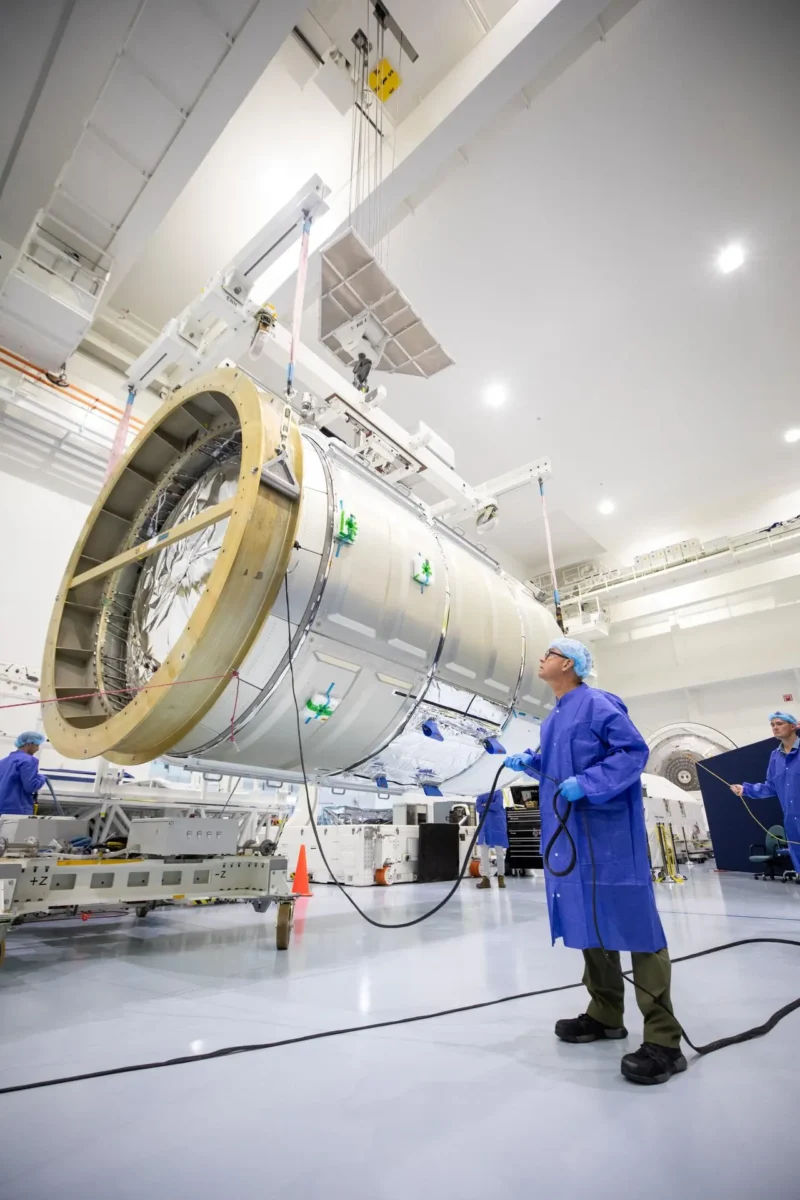
In December, NG-20’s unpressurized Service Module (SM) concluded its final checkouts and was transported overland from Northrop Grumman’s facilities in Dulles, Va., to Florida for launch. Last week, teams integrated the SM with Cygnus’ Pressurized Cargo Module (PCM)—built by Thales Alenia Space in Turin, Italy—and began loading equipment, payloads and supplies. The complete spacecraft stands 21 feet (6.4 meters) tall and boasts an internal pressurized volume of 950 cubic feet (27 cubic meters).
Following 29 January’s launch, the NG-20 Cygnus will approach the space station early on the 31st, to be grappled by the 57.7-foot-long (17.6-meter) Canadarm2. It will then be robotically berthed onto the Earth-facing (or “nadir”) port of the Unity node.
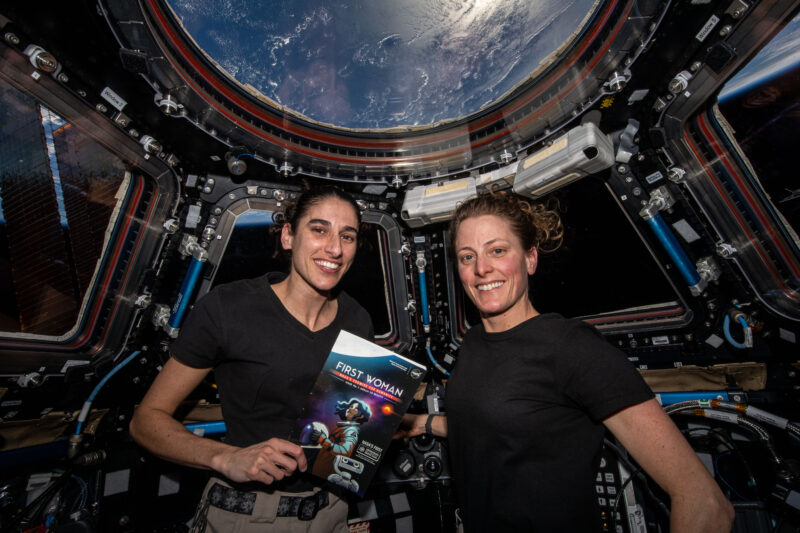
Commanding the Canadian-built robotic will be Expedition 70 crewmembers Loral O’Hara and Jasmin Moghbeli, with an expectation that Cygnus will remain attached to the sprawling orbital complex until late spring. Yesterday, O’Hara and Moghbeli reviewed Cygnus’ mission profile, rendezvous procedures and command and control interfaces to prepare for their roles and responsibilities during the NG-20 arrival.
Among NG-20’s haul of payloads is the Robotic Surgery Tech Demo, led by Principal Investigator Scott Tarry of the University of Nebraska at Omaha, which is capable of being remotely controlled or teleoperated from the ground. To be mounted in an Express rack locker aboard the ISS, this miniature surgical robot will conduct simulated surgical tasks to assess the effects of microgravity and time-lag latency upon its activities.
The robot will execute an autonomous subset of surgical tasks independently and a remotely teleoperated mode which will see it controlled by a user from an Earth-based interface. “As longer space missions become more common, the potential need for emergency care increased, including surgical procedures from simple stitching of lacerations to more complex activities,” NASA explained. “Results from this investigation could support development of robotic systems to perform procedures, ensuring the safety of crew members and the success of future missions.”
The Compartment Cartilage Tissue Construct investigation, led by Principal Investigator Yupeng Chen of the University of Connecticut, will demonstrate a pair of technologies—Janus Base Nanomatrix (JBNm) and Janus Base Nanopiece (JBNp)—to grow cartilage tissues in space with the intention of studying cartilage diseases and potential therapies to combat cartilage degenerative diseases, notably osteoarthritis.
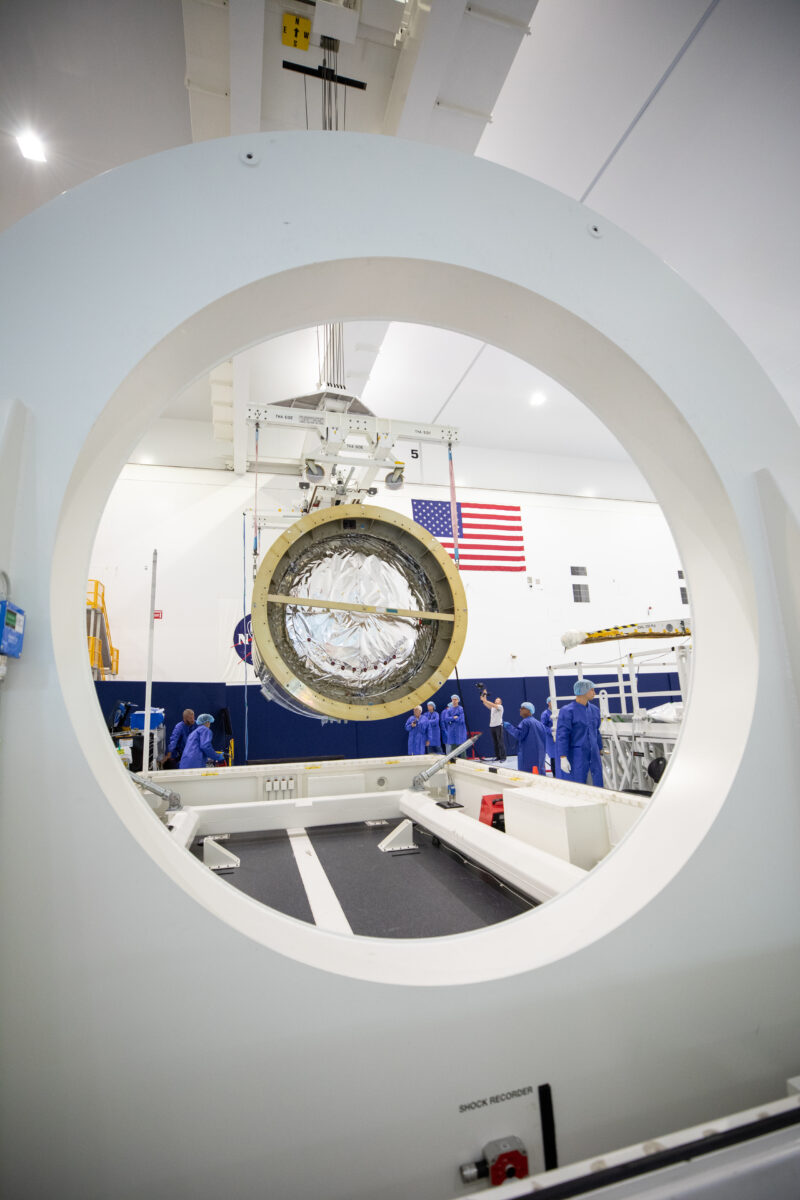
The Kentucky Re-entry Probe Experiment (KREPE)-2 will see three instrumented capsules deployed inside Cygnus at the end of the NG-20 mission to evaluate affordable re-entry technologies. The capsules are outfitted with data-gathering sensors, including thermocouples positioned at various depths within their heat shields, to assess the thermal response during re-entry and transmit directly to orbiting Iridium satellites and from thence to ground stations.
Shortly before Cygnus departs the ISS later this spring, station crew members will remove the capsules, position them in three discrete locations and transition them into a “dormant” state as the cargo ship is loaded with waste materials for disposal. During re-entry, the KREPE-2 capsules will monitor Cygnus’ breakup in the upper atmosphere—evidenced by a temperature “spike” from on-board thermocouples, a specified level of acceleration, a physical detachment from the protective shell or a combination of all three—and continue recording until splashdown in the ocean is detected.
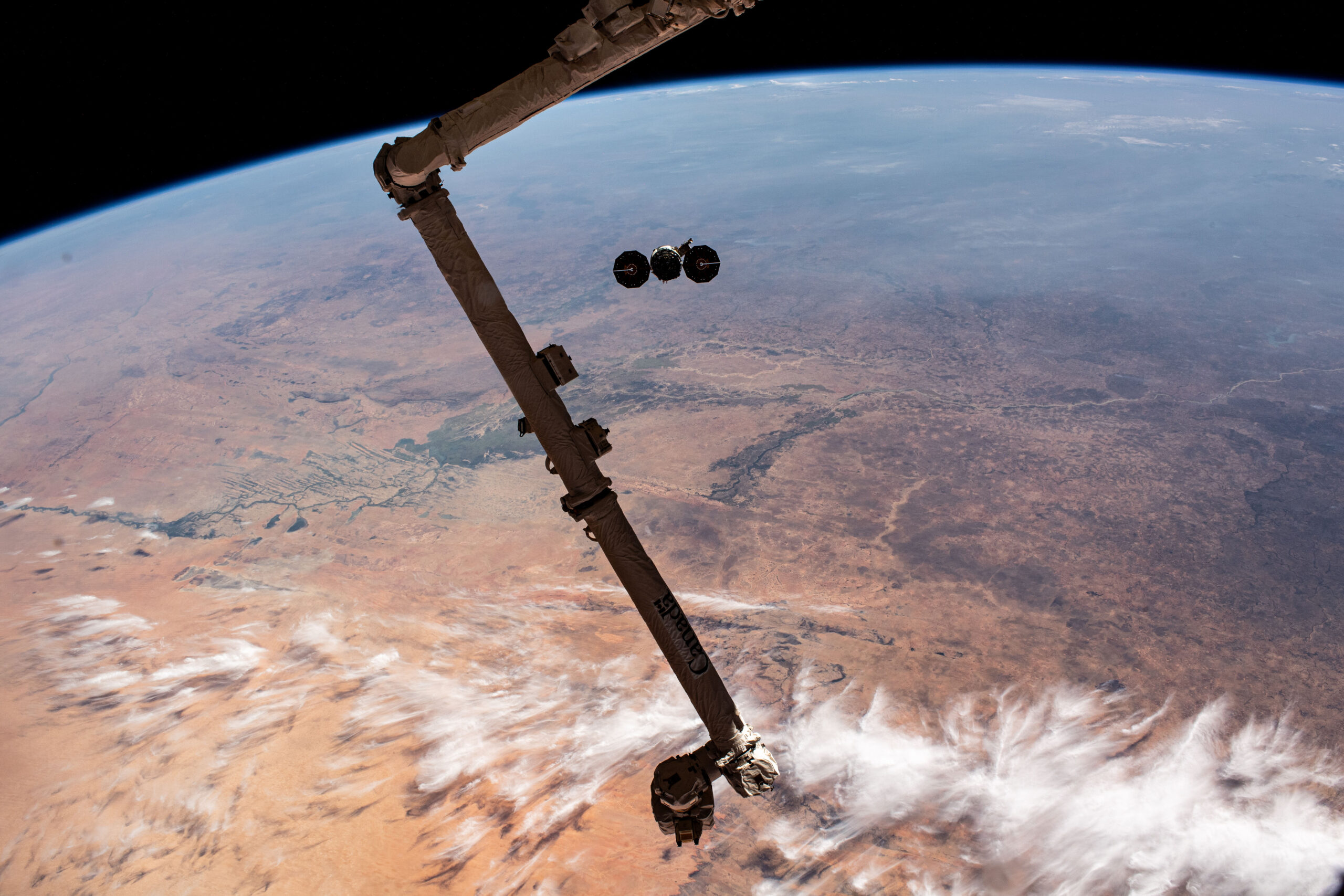
Manufacturing of Semiconductors and Thin-film Integrated Coatings (MSTIC), supplied by Made in Space of Jacksonville, Fla., will seek to produce high-quality, low-cost semiconductor chips for conceptual applications in the electronics industry. “The potential for producing films with superior surface structures and the broad range of applications from energy harvesting to advanced sensor technology are particularly groundbreaking,” said Alex Hayes of Redwire Space, which developed the technology. “This represents a significant leap in space manufacturing and could herald a new era of technological advancements with wide-reaching implications for both space exploration and terrestrial applications.”
And the European Space Agency (ESA) is providing its 3D Metal Printer to test additive manufacturing or 3D-printing or small metallic components to examine their functionality, performance and operations, as well as their quality, strength and characteristics. Three-dimensional printing carries great potential for creating parts for maintaining equipment on future long-duration missions or deep-space expeditions to the Moon and Mars.





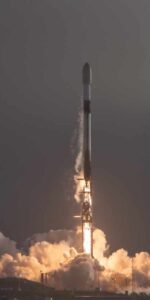
One Comment
Leave a ReplyOne Ping
Pingback:Crew-7 Prepares for Monday Space Station Departure, Tuesday Splashdown - AmericaSpace